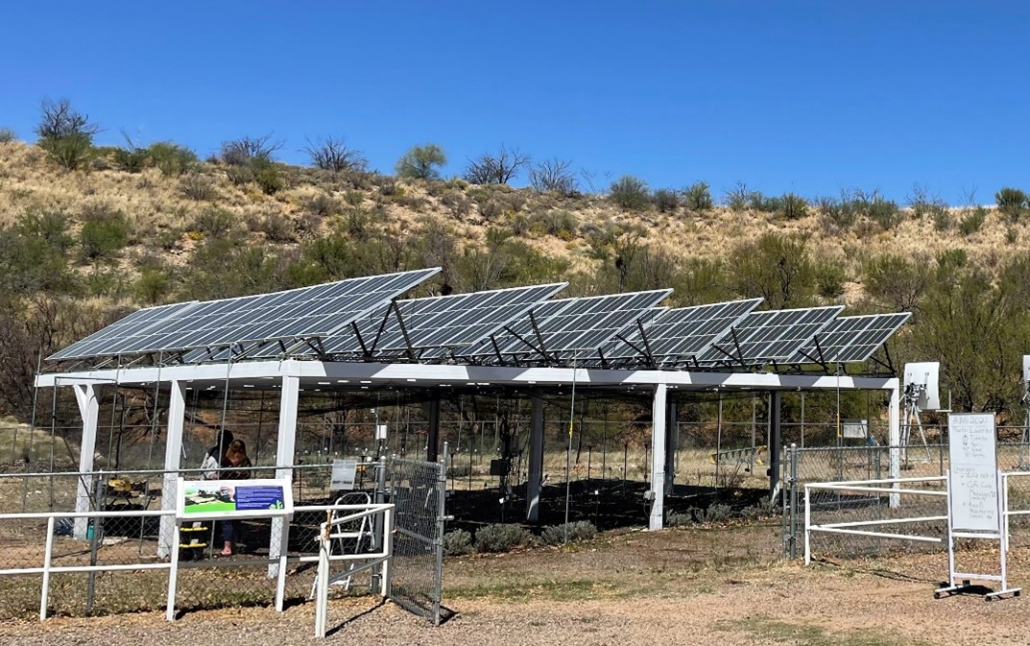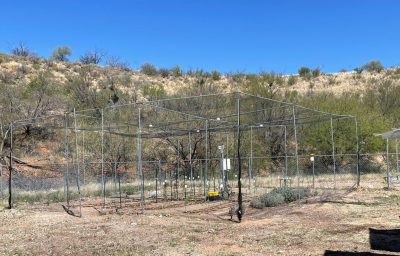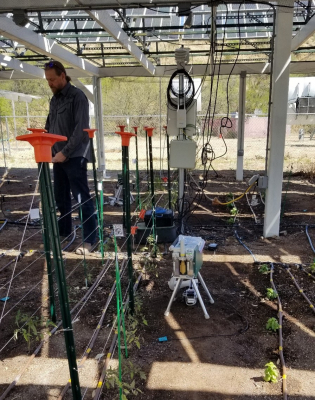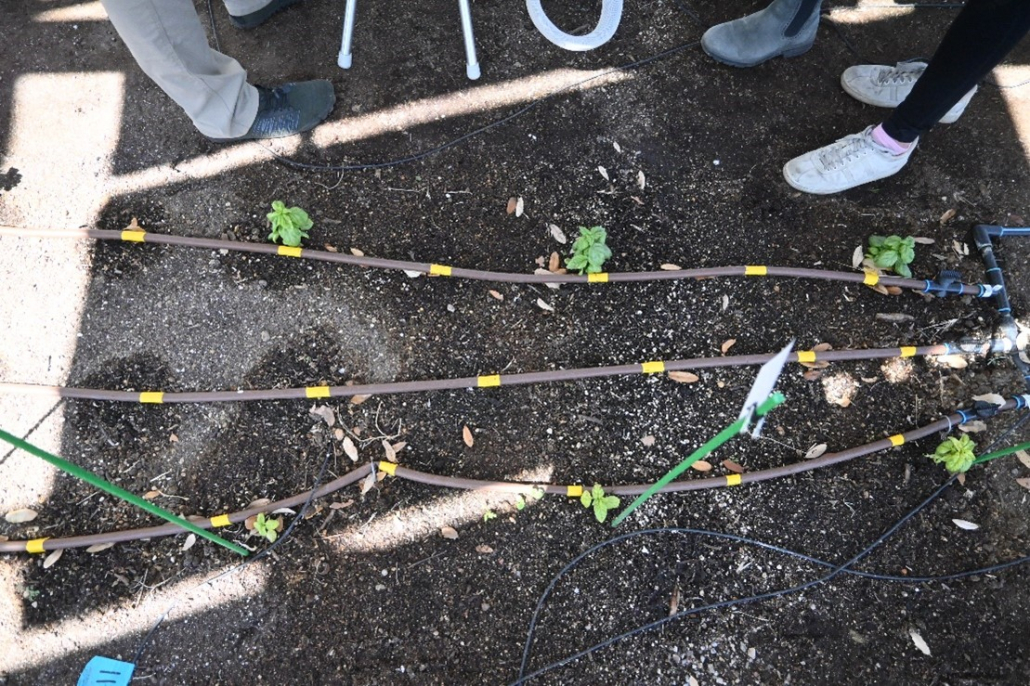This publication intends to inspire critical thinking about the importance of social aspects in agrisolar projects. We highlight considerations related to cultural landscapes, social acceptance, and participatory planning and offer lessons learned from case studies and a Stakeholder Engagement Plan to empower project planners and stakeholders. The intended audience for this chapter includes project planners, community developers, solar developers, researchers, landowners, and community members. While broad, the intent is to provide background, context, and considerations for these different audiences and an approach to meaningful engagement.
Tag Archive for: agrivoltaic
By Carl Berntsen, NCAT Energy Engineer
May 2023
This guide serves as an introduction to the solar industry, relative to agrisolar development in the United States, community programs, and solar ownership or lease opportunities for homes, farms, and ranches. It covers ownership options for small-scale, single-user solar installations, community solar installations that distribute power throughout a community, and utility-scale installations that sell power to the utility, as well as common utility-scale land-lease components for landowners looking to allow a developer to construct and operate a solar installation on a portion of their land. Finally, using nationwide average statistics on production and cost, the guide offers a financial snapshot of a utility-scale solar installation.
Biosphere 2, located in Oracle, Arizona, houses one of the first agrivoltaic research sites in the United States. The site was built seven years ago with a 21.6-kW solar PV array shading a 9×18-meter garden. Greg Barron-Gafford, along with several graduate students, use this garden to study the changes in phenology of several varieties of vegetables and fruit, soil health, panel production, water consumption, and carbon scrubbing that are affected by the shading of the solar array. A control area of the same size with no shading was built within 10 feet of the solar garden for comparison. The fruits and vegetables grown here are tomatoes, caribe potatoes, butternut squash, red beans, bok choy, and basil.

Harvested food grown in the solar garden at Biosphere 2. Photo: Mariah Rogers, University of Arizona
Phenology, the study of the relationship between climate and plant life production and health, is a main focus at Biosphere 2. Graduate students are studying the timing of fruiting and/or flowering, along with plants’ dying cycle, at the solar garden and comparing these results to the full-sun control site. They are currently working with the National Phenology Network to share and analyze data. Soil health is also monitored by testing the amount of carbon in the soil. This is a slower process, as it takes time for carbon, microbes, and other organics to develop in dryland areas such as Arizona.
The students test the greenhouse gas consumption or carbon-scrubbing abilities of the plants as the conditions change. They track photosynthesis of the plants grown beneath the panels versus those grown in the control area to see when and for how long photosynthesis is affected by the hot climate and the shade. Plants’ ability to carbon scrub decreases in hot conditions, which in turn affects their health and growth patterns. This research is showing that plants can maximize their ability to carbon scrub under the solar panels due to the shading and reduced heat seen in dryland agriculture.
The watering-treatment experiment tests the health and production of plants using two watering methods. Half of the plants are on a watering schedule based on what the plants in the control site need to flourish. The other half of test plants are watered half the time, therefore receiving half the water. Both watering schedules are used in the solar garden and control garden for comparison. These experiments are proving that shaded growing areas in dryland agriculture can use less irrigation water to grow crops if planted under a solar array.
Recently, these plants went through a blind taste test to see if there is any taste difference between the fruits and vegetables grown under solar versus under full sun. The main plants tested were tomatoes, beans, squash, and basil. Each plant group was harvested from both the control site and the solar site on the same day, washed the same, and presented the same. The study found that no significant taste difference was observed—good news for farmers worried about a change in flavor for their crops.
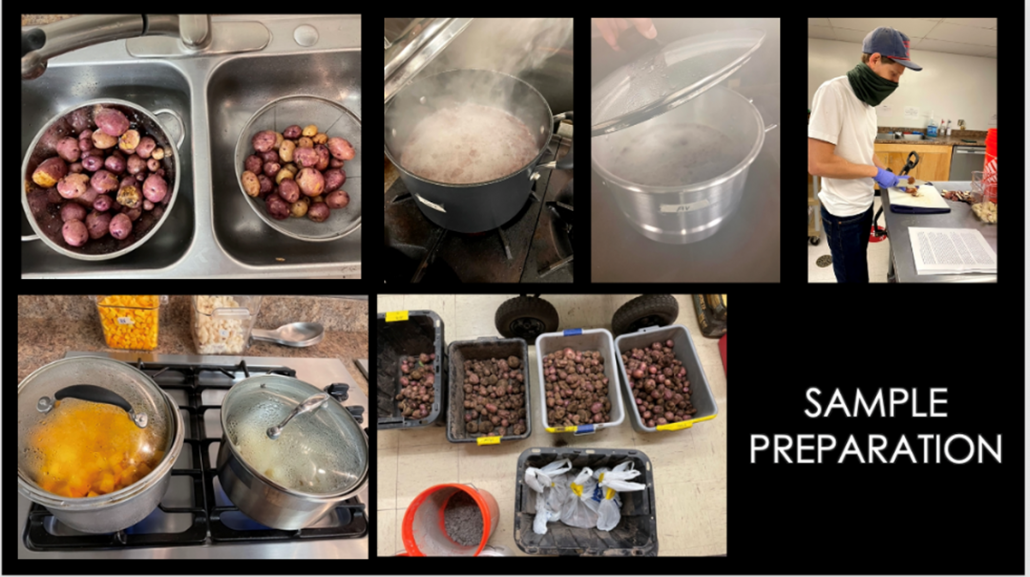
Sample preparation for the solar garden grown taste tests. Photo: Mariah Rogers, University of Arizona
The solar panel temperatures are being tested using thermocouples taped to the underside of the panels. Electricity flows easier in cooler conditions; thus, solar panels produce best when the underside of the panel stays under 75-80oF. The garden below creates a cooler environment for the panels than arrays with a gravel layout.
Graduate students are also testing a remote sensing system at the solar site using satellite imaging and remote monitoring to learn whether remote sensors and monitoring are effective in site monitoring. This technology will hopefully help with site monitoring from a distance when travelling is not an option.
Greg Barron-Gafford and his team of graduate students are making leaps and bounds in agrivoltaic farming research. They hope to educate farmers across dryland agriculture and beyond on the double benefits of growing under solar panels while also producing electricity. To learn more about this program please watch the video below and visit Greg’s website. https://www.barrongafford.org/agrivoltaics.html
Agrivoltaics is a dual land-use approach to collocate solar energy generation with agriculture for preserving the terrestrial ecosystem and enabling food-energy-water synergies. Here, we present a systematic approach to model the economic performance of agrivoltaics relative to standalone ground-mounted PV and explore how the module design configuration can affect the dual food-energy economic performance. A remarkably simple criterion for economic feasibility is quantified that relates the land preservation cost to dual food-energy profit. We explore case studies including both high and low value crops under fixed tilt bifacial modules oriented either along the conventional North/South facings or vertical East/West facings. For each module configuration, the array density is varied to explore an economically feasible design space relative to ground-mounted PV for a range of module to land cost ratio (𝑴𝑳) – a location-specific indicator relating the module technology (hardware and installation) costs to the soft (land acquisition, tax, overheads, etc.) costs. To offset a typically higher agrivoltaic module cost needed to preserve the cropland, both East/West and North/South orientated modules favor high value crops, reduced (<60%) module density, and higher 𝑴𝑳 (>𝟐𝟓). In contrast, higher module density and an increased feed-in-tariff (𝑭𝑰𝑻) relative to ground-mounted PV are desirable at lower 𝑴𝑳. The economic trends vary sharply for 𝑴𝑳< 10 but tend to saturate for 𝑴𝑳> 20. For low value crops, ~15% additional 𝑭𝑰𝑻 can enable economic equivalence to ground-mounted PV at standard module density. Researchers have presented a techno-economic modeling framework to assess and predict the economic performance of 𝐴𝑉 systems relative to the standard ground mounted 𝑃𝑉. The effects of module design configurations including array density and orientation, income from crop, technology specific and land related costs, and 𝐹𝐼𝑇 are explored. To support cropland preservation, 𝐴𝑉 typically has a higher module technology cost as compared to standard 𝑃𝑉 primarily due to elevated mounting and customized foundations that can potentially make it economically non-attractive for 𝑃𝑉 investors. They show that it is possible to design an economically attractive 𝐴𝑉 system by selecting suitable crops and module configuration for the given land costs and 𝐹𝐼𝑇.
Walt Disney World recently announced its plan to achieve net-zero greenhouse emissions by 2030 by installing two 75-megawatt solar arrays, according to a news release by One Green Planet. These arrays will result in roughly 40% of Disney World’s electricity being powered by solar energy.
“Our commitment to the environment goes beyond imagining a brighter, more sustainable future by putting possibility into practice to ensure a happier, healthier planet for all,” said Jeff Vahle, president of Walt Disney World Resort, according to the news release.
The project will include installing roughly 500,000 solar panels, which will produce more than 375,000-megawatt-hours of carbon-free solar energy within a year of operation. Other Disney locations, including Disneyland Paris, are developing solar installations such as solar parking-lot canopies, which reduce greenhouse emissions by 750 tons of carbon dioxide annually, according to One Green Planet.
Conservation Blueprint, a company that works within the renewable energy industry to design, establish, and manage the final vegetative cover on solar energy projects, has partnered with the team at Walt Disney World to design seed mixtures to be used with the solar energy installations. Peter Berthelsen, a stakeholder with the AgriSolar Clearinghouse and president of Conservation Blueprint, stated, “Creating and managing renewable energy projects with pollinator benefits in mind is a great way to [achieve] environmental sustainability results.”
The solar arrays will begin operations in 2023. The installation will make Disney the largest commercial consumer of solar energy in the state of Florida.
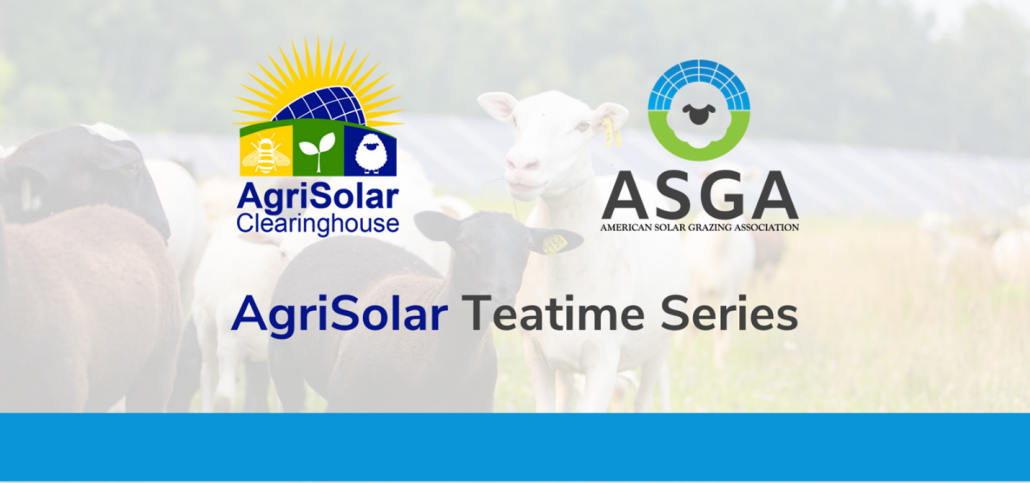
The AgriSolar Clearinghouse is partnering with the American Solar Grazing Association to run a series of joint educational agrivoltaic webinar presentations, known as Teatimes. These events are free and open to the public, and recordings will be broadcast on the AgriSolar Media hub if you can’t make the live event.
The series will start April 21, with the presentation Leasing for Community and Grid-Scale Solar – Key Considerations While Negotiating, by Tom Murphy, the Director of Penn State’s Marcellus Center for Outreach and Research (MCOR). To join the webinar, use this link, meeting ID, and passcode:
Zoom link: https://us02web.zoom.us/j/81562414717?pwd=b2xnQ3hCQk1nMkh3aGM5dzRHS2JIZz09
Meeting ID: 815 6241 4717
Passcode: 414544
ASGA is founded by farmers for farmers and solar professionals. They swap stories, best practices, and good ideas about solar grazing. We are excited to bring their valuable experience and expertise to the AgriSolar Clearinghouse network and hope this partnership will help foster connections, promote best practices, and provide support for solar graziers around the country.
Check out our events page for future dates, topics, and sign-up information.

